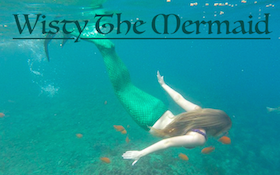So, molds for the silicone test pieces are ready, tomorrow I'll make the casts. Aglaia has been so kind to give me some silicone of a different brand which she used in her tail, and I have some Dragonskin.
The plan is doing a plain silicone cast each for stretch and softness comparison and then coat fabric with both silicones and compare that to a piece of uncoated fabric.
Pictures will follow, I can't get my smartphone to upload small pics yet, and I don't want to go too pic-heavy

.
Sent from my phonebrick using Tapatalk
), and I hope coating it with silicone will at least stop the fading.
! I'll keep you informed about the progress, give details and post pictures. Stay tuned!




 Reply With Quote
Reply With Quote











 The experiments worked out really well, and now there are several samples to compare the stretch of the different treatments. The test setup is as follows:
The experiments worked out really well, and now there are several samples to compare the stretch of the different treatments. The test setup is as follows: ). A timelapse video is as good as done, I'll post it when it's ready.
). A timelapse video is as good as done, I'll post it when it's ready.





Bookmarks